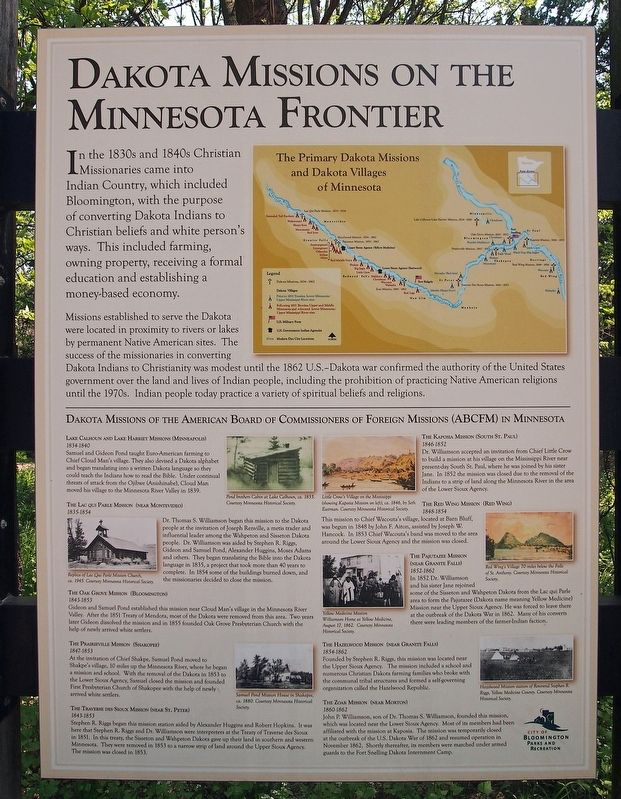In the 1830s and 1840s Christian Missionaries came into Indian Country, which included Bloomington, with the purpose of converting Dakota Indians to Christian beliefs and white person’s ways. This included farming, owning property, receiving a formal education and establishing a money-based economy.
Missions established to serve the Dakota were located in proximity to rivers or lakes by permanent Native American sites. The success of the missionaries in converting Dakota Indians to Christianity was modest until the 1862 U.S.–Dakota war confirmed the authority of the United States government over the land and lives of Indian people, including the prohibition of practicing Native American religions until the 1970s. Indian people today practice a variety of spiritual beliefs and religions.
Dakota Missions of the American Board of Commissioners of Foreign Missions (ABCFM) in Minnesota
Lake Calhoun and Laker Harriet Missions (Minneapolis)
1834-1840
Samuel and Gideon Pond taught Euro-American farming to Chief Cloud Man’s village. They also devised a Dakota alphabet and began translating into a written Dakota language so they could teach the Indians how to read the Bible. Under continual threats of attack from the Ojibwe (Anishinabe), Cloud Man moved his village to the Minnesota River Valley in 1839.
The Lac qui Parle Mission (near Montevideo)
1835-1854
Dr. Thomas S. Williamson began this mission to the Dakota people at the invitation of Joseph Renville, a metis trader and influential leader among the Wahpeton and Sisseton Dakota people. Dr. Williamson was aided by Stephen R. Riggs, Gideon and Samuel Pond, Alexander Huggins, Moses Adams and others. They began translating the Bible into the Dakota language in 1835, a project that took more than 40 years to complete. In 1854 some of the buildings burned down, and the missionaries decided to close the mission.
Photographed by McGhiever, May 7, 2016 HMDB.org
Related
Sorry, no records were found. Please adjust your search criteria and try again.
Sorry, unable to load the Maps API.
